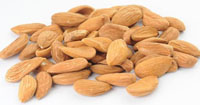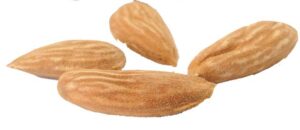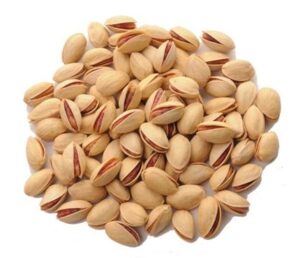News of February 2019
PISTACHIO
IRAN: Iran’s annual pistachio production normally stands at 250,000 tons
Iran normally produces 250,000 tons of pistachio per year, said an Iranian MP. Ahmad Anaraki Mohammedi, the representative of Rafsanjani and Anar cities — central Iranian province of Kerman. News of February 2019
Dried Fig Info
Pistachio exports in the current fiscal year (to end March 20, 2019) has been highly favorable, he added.
Mohammadi noted that the recent hikes in foreign currency prices in domestic market has made overseas sales of the product highly economical.
More than 95 percent of Iran’s annual pistachio output is exported, he added.
The MP said Rafsanjan is capital of pistachio production in Iran and the world, adding the city ranks first in the country in terms of having the largest amount of pistachio production and exports.
He described the Rafsanjan’s pistachio as one the best in the world quality-wise.
“Being home to more than 90,000 hectares of unpartitioned pistachio gardens, the world’s largest manmade forest is currently located in the city which has been created in dry land with low precipitation.”
He put the share of Kerman Province in the country’s total pistachio production at 50 percent, adding more than 40 percent of the province’s pistachio orchards are located in Rafsanjan.
“Over the past few years, greater attention has been paid to the product’s packaging. That is why more markets have recently opened up to Iranian pistachio. News of February 2019
He said the US is Iran’s traditional rival in the global pistachio market. Despite higher US pistachio production, significant investment in the field and use of modern cultivation and harvesting methods and techniques in production, Iran’s pistachio has still maintained its own customers in the world due to its exceptional quality. (Quoted from Etemadonline 29- 02 -2019)
RAISIN
USA: Decrease in California’s raisin shipments
Even compared to last year when rain caused major crop damage California raisin shipments are still down substantially to both domestic and foreign markets. California raisin exports totaled 4,932 packed tons in January, down slightly from December and down 35% compared to January 2018.
From August 1st to January 31st total shipments of California raisins totaled 97K packed tons, 33% lower than the prior year, when shipments totaled 143K. For the same time period, foreign exports have dropped off more severely (22k / 44%) than domestic shipments (24k / 26%). In Europe, the drop-off in shipments has been more pronounced, with the UK and Germany down by (2.9K / 81%) and (2.7K / 76%), respectively. (Quoted from Anderson Export 17 Feb 2019)
DATE
IRAN: Iran Date Exports Earn $300m Since March 2018
Speaking to Islamic Republic News Agency, Kaveh Zargaran said that Iran’s exports of dates have grown by 20 percent over the past year. He said that dates are among the most important garden products of Iran after pistachio, apple and saffron. Iran exported more than 253000 tons of dates valued at $250. Iran exports of dates grew by 21% in terms of weight and 20% in term of value in the one year period compared to the preceding year, He said, adding that almost 58% of the product are exported to India, Pakistan, Kazakhstan, Turley and Iraq. (Quoted from Financial Tribune 5- Feb -2019)
FIG
IRAN: Iran is a major leader in Fig production in the world
Iran is one of the producers of organic figs in the world. Iranian fig is of high quality and is exported to many countries around the world including Japan, China, Hong Kong, Vietnam, Malaysia, Singapore, South Korea, Taiwan, India, Iraq, Belgium, Netherlands, England, the Republic of Azerbaijan and the Persian Gulf states.
The yellow, black and green figs are the most important varieties of fig which are grown in the Iranian cities of Saveh, Lorestan, Kazeroon, Jahrom and Neyriz.
More than 90 percent of figs in southern Iran are grown in Fars Province. This province has appropriate conditions for growing organic figs. All the figs produced in this province are grown without pesticides or chemicals.
more 20 counties of Fars Province including Estahban, Darab, Neyriz, and Jahrom.
The soil and climate in the Estahban valley are ideal for growing figs.
No chemical fertilizer is used for growing figs, but every year the soil under the trunk is replaced with fertile soil, and therefore, the fig products are considered organically grown. (Quoted from Mehrnews 13-02-2019) News of February 2019
SAFFRON
IRAN: Saffron options contracts to be launched by March 20
Given the widespread welcoming by market participants for launching futures and certificates of deposit for saffron trade at Iran Mercantile Exchange (IME) and its positive impact on transparency of the price of saffron and the elimination of intermediaries, IME will launch saffron options contracts by the end of current Iranian calendar year (March 20, 2019), IME’s managing director announced. News of February 2019
Hamed Soltaninejad stated that IME, aimed at hedging the price of saffron, and, consequently, creating the possibility of long-term planning and management of supply and demand for farmers and activists in this field, as well as the development of derivatives as one of the main pillars of the development of the Iran capital market, launched Saffron futures for the first time in Iran at the beginning of the year, being welcomed highly, IME’s International Affairs and Public Relations Department reported on Tuesday.
According to Soltaninejad, since the launch of these contracts, more than 11 million futures contracts have been traded on Iran Mercantile Exchange. IME’s managing director further said that the introduction of new financial instruments would reduce transaction costs, increase transparency and elevate the level of transactions, adding, “the launch of saffron futures contracts in this year led to the development of traditional market structures to modern structures and the development of domestic markets for saffron. Therefore, due to the widespread appreciation of the market participants for saffron futures and certificates of deposits, saffron options contracts will be launched by the end of this year. News of February 2019
Soltaninejad expressed the advantages of using this financial instrument, saying that the options contracts would enable farmers to secure sales at certain prices. In addition, due to the low transaction costs and price transparency on the Iran Mercantile Exchange, the entry of farmers into this market will lead to the elimination of intermediaries and the price management for saffron. (Quoted from Theiranproject 06-02-2019)



